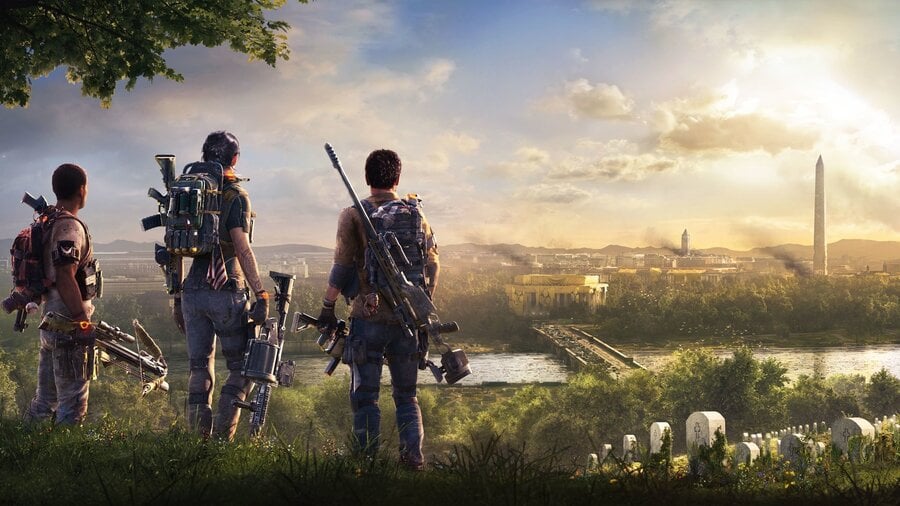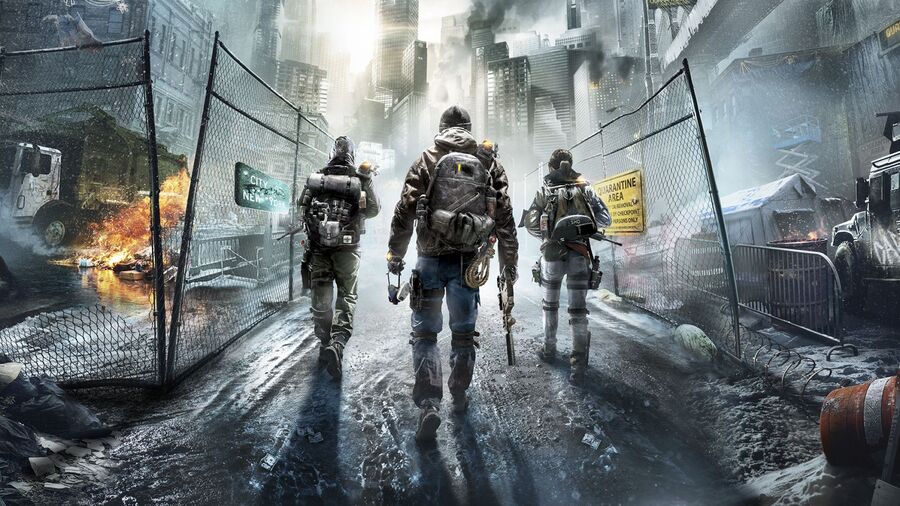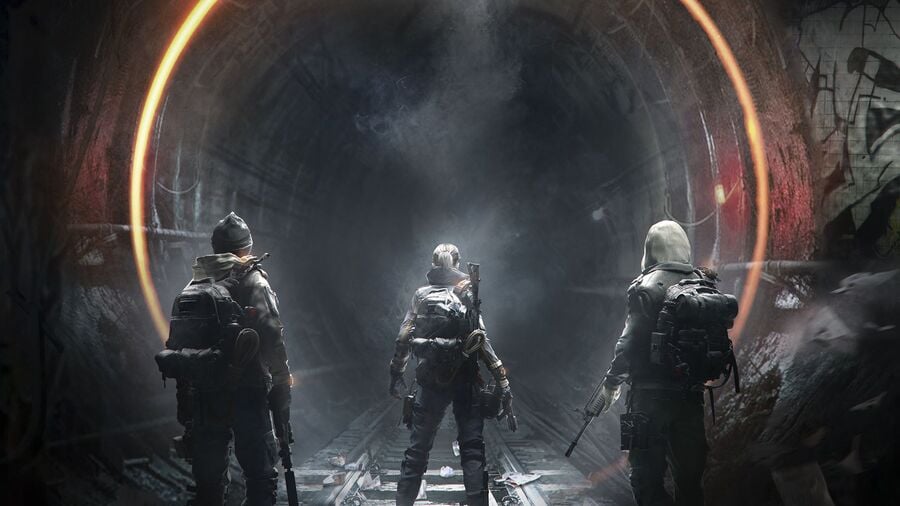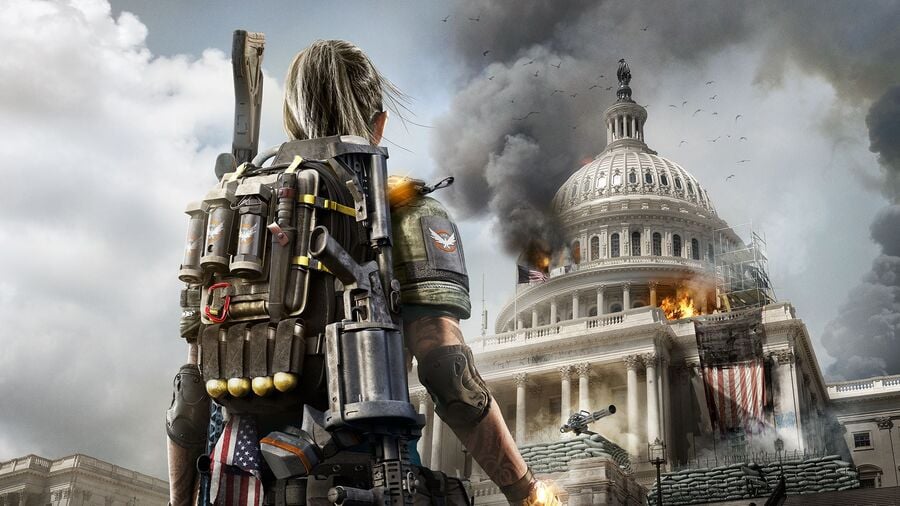
Cast your mind back to just before the start of this console generation. At E3 2013, there was a game that had the industry abuzz: Ubisoft’s closer to its press conference, a new Tom Clancy title called The Division. Promising engaging co-op play amidst a backdrop of chaos and the fall of Manhattan’s civilisation, it even offered a second-screen experience – remember those? At the dawn of the PlayStation 4 it offered connected experiences, essentially ticking every “back of the box” criteria it could.
A few delays later, and The Division finally launched in March of 2016. Reception was mixed – gunplay was unsatisfying, there were long stretches of running before you’d find anything worth doing, and there was a lack of variety in encounters and environments. However, it also looked great, had a focus on squad tactics not seen in similar titles, and the central concept of a more grounded RPG shooter had players picking the game up in droves – The Division made $330 million in its first week alone.

With The Division being a “live” title, expansions were inevitable. While there were some added for free (including endgame activities called Incursions), the title’s season pass promised three sizeable expansions. The first, Underground, presented itself as randomised “dungeons” that could be replayed for new loot – a fine addition to a title focused on gaining new gear.
Unfortunately, the subsequent expansions were pushed back so that Ubisoft could fix a litany of bugs, and when it did, it added little to the core Division experience. Survival (launched in late 2016), introduced a standalone mode focused on, well, survival. Players would scavenge for clothing and weapons, battling against other players and the elements to extract via helicopter.
Landing in early 2017, Last Stand added more diversity to The Division’s PvP options which had previously been restricted to The Dark Zone – an area where it was not uncommon for new players to be hunted down by more experienced ones with weapons that they could only dream of.
It would have been easy for Ubisoft to stop there – the game sold by the bucket load, and the season pass was fulfilled. It didn’t.

In fact, in October 2016, nestled between expansions, Ubisoft launched patch 1.4. This patch changed the game, making both major and minor amendments to its core. Small quality of life changes aside, it improved gunplay drastically (a key focus for any shooter-RPG hybrid) -- no longer would you unload three clips into an enemy’s face just for them to kill you almost instantly. Your weapons gained an added lethality that simply wasn’t there before.
Perhaps more impressively, The Division’s 1.4 patch completely changed its progression system. While gear earned had always been attached to a “Gear Score”, this number now had meaning. Finishing the campaign would allow you to reach a certain score. Once you’d cleared the minimum requirement, you could transition to a “World Tier” where you could earn more gear with a higher score. With a more generous loot system, it was a fun grind – never sticking with the same gear for too long and always feeling more powerful.
Since then, Ubisoft has added a free area to the map with the 1.8 update, while 1.7 added “Global Events” – challenging scenarios with a higher chance to earn better rewards. These were part of the second year of content which was added totally free of charge.

When I first played The Division at launch, I hit level 12 (out of 30) and bounced off. I struggled to kill bosses, my gear felt uninteresting, and I had no interest in being a lamb in the Dark Zone slaughterhouse. It fell by the wayside until I began to see the usual Reddit threads and tweets along the lines of “Hey, The Division is good now!”, so I jumped in again.
While the argument could be made that The Division of today should have been The Division that launched way back in 2016, it shows a willingness to learn and course correct from one of the world’s largest publishers. It would have been easy to count The Division as a purely financial success and move on. When Bungie’s Destiny launched, it was followed by two dismal expansions and then charged almost the full price of the game for The Taken King a year later, The Division built its content and systems simultaneously. Yes, the DLC expansions are fun in their own way, but the way they're framed as adjacent to the main title mean that you’re not missing out if you don’t have them.
With The Division 2 on the horizon, the first game may not be worth picking up at this point. With that said, Ubisoft has earned a second chance at what could be a fantastic franchise. If it's truly learned from the first game, then I think The Division 2 will surprise a lot of people – even launching a month after ANTHEM. I’ll see you in the streets of Washington DC, Agent.
Do you agree with Lloyd on The Division? Did you enjoy the first game at launch, or later on? What are your hopes for The Division 2? Lock and load in the comments section below.





Comments 15
I totally forgot this was coming out. Then I thought, hang on, didn't it come and go?
I played a little bit of the first one, it seemed okay to be honest. No doubt there will be a free weekend or something for this one that we'll get to try out at some point.
Like every Ubisoft game the so called trailers are never what the final product will be like, wether it's graphics gameplay take Watchdogs for graphics and Rainbow Six Siege didn't even look like what they showed at E3. Ghost recon Wildlands gameplay was no where near what they showed and it was played out my voice actors in that game the vehicle handing is awful especially on bikes.
Where this game has done one better than its predecessor only time will tell what content it will add, the trailer to the first where it should you Manhattan you couldn't even go there for god's sake of part of it.
For me personally there hasn't been a better online co-op game. My brother lives abroad and we played this game more than any other. Admittedly my interested waned once the story was done but I still played from time to time.
I think Ubisoft has always done a good job on improving on their new IPs with sequels so greatly looking forward to the second one in a couple of months. Lots of good info coming out now about it too.
I'm getting Anthem and The Div 2 day one. RIP free time...
Not for me the first one was so boring. But i think Ubisoft games are really cookie cutter games with microtransactions only matched by free mobile games its almost insulting. They are on the same page as Activision Blizzard, EA and Bethesda.
I played The Division like a single player game and quite enjoyed my time with it. The end boss was pap, though. I'm up for this second game.
@Nakatomi_Uk I hated the handling of those dirt bikes in Wildlands at first but once I got used to it I thought they were amazing fun to ride. I loved the way you had to use your body weight for proper cornering.
@Splat I will be getting both at launch as well. The first division grew into a great game imo and really looking forward to the sequel. Going to be hard to juggle 2 looter/shooters but will have to make do
I just recently bought The Division for 10 bucks and I'm having a blast! It's good that I waited for a trully refined product.
Will probably do the same for the division 2
Nice that they improved the gunplay and made the grind fun. But even still, it all feels very generic. I didn't see any sign of personality when I tried it.
I thought the gunplay & cover system in the Division was pretty good, it was just the bullet sponge enemies & lack of a proper campaign that inevitably made playing solo lose its charm over time (and having to fork out for PS Plus), especially as most of the missions seemed to be the same 'go to location, defend, take a breather, defend again (maybe throwing in a mini boss here or there to spice things up).
Although I enjoyed the original and got my money's worth out of it playing solo, I'm not sure I'll bother playing Division 2 as I'm guessing it won't deviate too far from the same template etc.
Not knowing too much about this game, I've purchased The Division a few weeks ago as it was on special (like $30 including all expansions). The game is good looking, combat is quite responsive but frustration built up as it felt like all the mobs were bullet sponges. So I did a quick search which basically told me that it's far better now than what it used to be...!? I cannot even begin to understand how bad it must have been at launch. I understand this is to be considered a RPG, but there are some darn limits to how many bullet I can snipe someone in the head before I lose my suspension of disbelief. I really hope The Division 2 does better, and reading about the title, it should. But like many, I think I'm going to hold for proper reviews before I pull the trigger on this one.
@uMuffin
You have me more concerned. I owned the Division for a short time after it’s release. I hated the sponges and that when playing with friends the enemies didn’t level to individual players. So I sold it and haven’t touched it since.
The author of the article tells how it’s so much better but you sound like your experience is very similar to mine even though we played the game years apart. Now, I more concerned for 2.
I hated, freaking hated a dude running at me with a bat and taking a full clip or 2 to the face. Also, how can AI be so stupid. Give the dude a pistol for distance and have him set up as a flanker who does massive damage up close. SMH.
I really enjoyed Destiny and having a new co-op looter shooter to look forward to I was hyped for The Division.
Instead of enjoying it I learnt that a looter shooter needs interesting weapons & armour to earn but everything looked the same. The location of the game also got incredibly dull and the enemies unvaried and tedious.
The gameplay cover system was alright and the interface was really cool but that's about it.
The reviews for no. 2 would have to be outstanding for me to give the series another go.
I quite enjoyed the first when playing on my own or in co-op with friends, but - as is often the case for me - the PvP just did my bloody head in. I barely even touched the Dark Zone as I got fed up being ganked. I just wanted to explore the DZ with a mate and try to get the stuff out taking on the AI.
Yeah yeah, "git gud" and all that... but we didn't have the endless hours to put in for that.
So I really don't know if I'll bother with the second one.
Isn't it weird how folks dislike bullet sponge enemies but will happily chip away at melee sponge enemies in RPG games?
Show Comments
Leave A Comment
Hold on there, you need to login to post a comment...